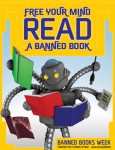 The issue of challenging books is one that is unlikely to go away. After all, it has come up repeatedly in the 220 years the First Amendment has been part of the Constitution. But where are the challenges coming from, what prompts them and in what settings? That’s something the American Library Association has attempted to track.
The issue of challenging books is one that is unlikely to go away. After all, it has come up repeatedly in the 220 years the First Amendment has been part of the Constitution. But where are the challenges coming from, what prompts them and in what settings? That’s something the American Library Association has attempted to track.
Here’s what it discovered. From 1990 to 2010, there have been approximately 11,000 challenges in a variety of settings. Perhaps not surprisingly, the majority occurred in schools (4,048) and school libraries (3,659). Public libraries were third, with 2,679 challenges. Given that, it is likewise not surprising that most challenges are initiated by parents (6,103). The next largest category is “Patron” at 1,450. Interestingly, board members initiated more challenges (325) than clergy (115) and religious groups (150) combined.
As for the challenges themselves, “sexually explicit’ tops the list of reasons at 3,169. There is a cluster of challenges that follow, “offensive language” (2,658), “violence” (2,289) and “unsuited to age group” (2,232). The only other categories exceeding 1,000 are the catchall “other” at 1,346 and “occult” at 1,051. (The reasons exceed the number of challenges because often multiple reasons are given for a challenge.)
If there’s good news in the statistics, it’s that 2010 saw the smallest number of challenges, 348, since 1990, when there were 157. The mid-’90s were the prime era for challenges with 686 in 1993, 757 in 1994, 762 in 1995 and 661 in 1996. Perhaps people smarter than me have insight into what in our culture or the publication world led to that surge. I know Judy Blume attributes it to the rise of the so-called Moral Majority in the 1980 election. But she doesn’t attribute it entirely to that. She writes,
Those who were most active in trying to ban books came from the “religious right” but the impulse to censor spread like a contagious disease. Other parents, confused and uncertain, were happy to jump on the bandwagon. Book banning satisfied their need to feel in control of their children’s lives. Those who censored were easily frightened. They were afraid of exposing their children to ideas different from their own.
Unfortunately, the statistics I’m working from don’t go back to the 1980s but undoubtedly religious fractures continued in the 1990s.
Narrowing the focus to the last 10 years, there were 4,660 challenges. Again, “sexually explicit” was the most frequent reason given, occurring 1,536 times, followed by 1,231 challenges due to “offensive language. Approximately 37 percent of the challenges were in classrooms, with another 30 percent in school libraries and 24 percent in public libraries. The majority of challenges were initiated by parents (48%), suggesting that an increasingly digital world certainly has not reduced parental concern over the ability to control aspects of their childrens’ lives. As I’ll discuss tomorrow, exercising parental authority is crucial — but the question is how far it can reach.
I believe that censorship grows out of fear, and because fear is contagious, some parents are easily swayed.
Judy Blume, Censorship







